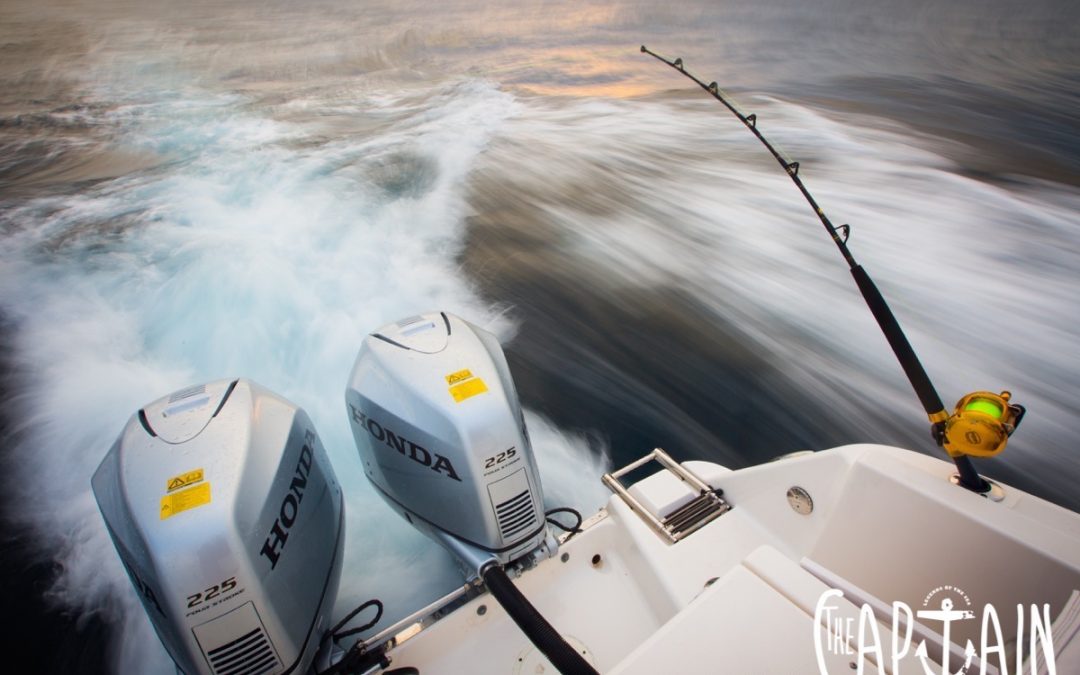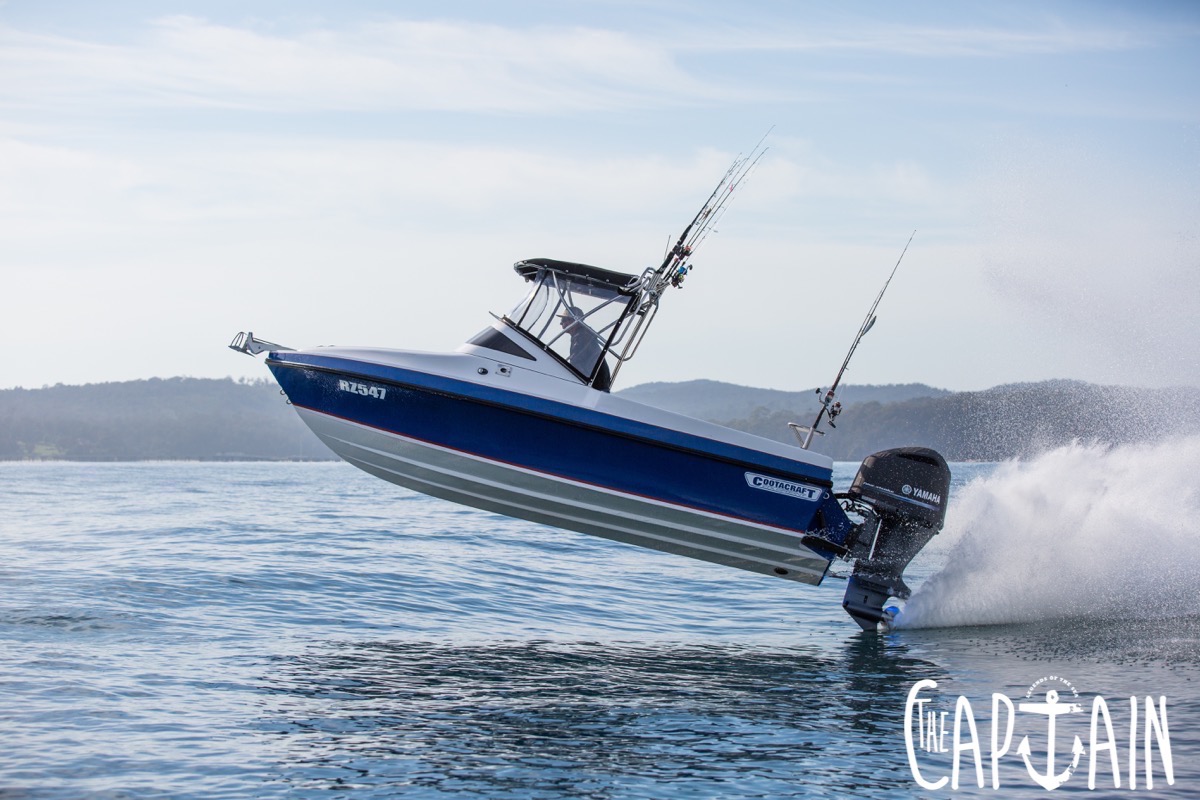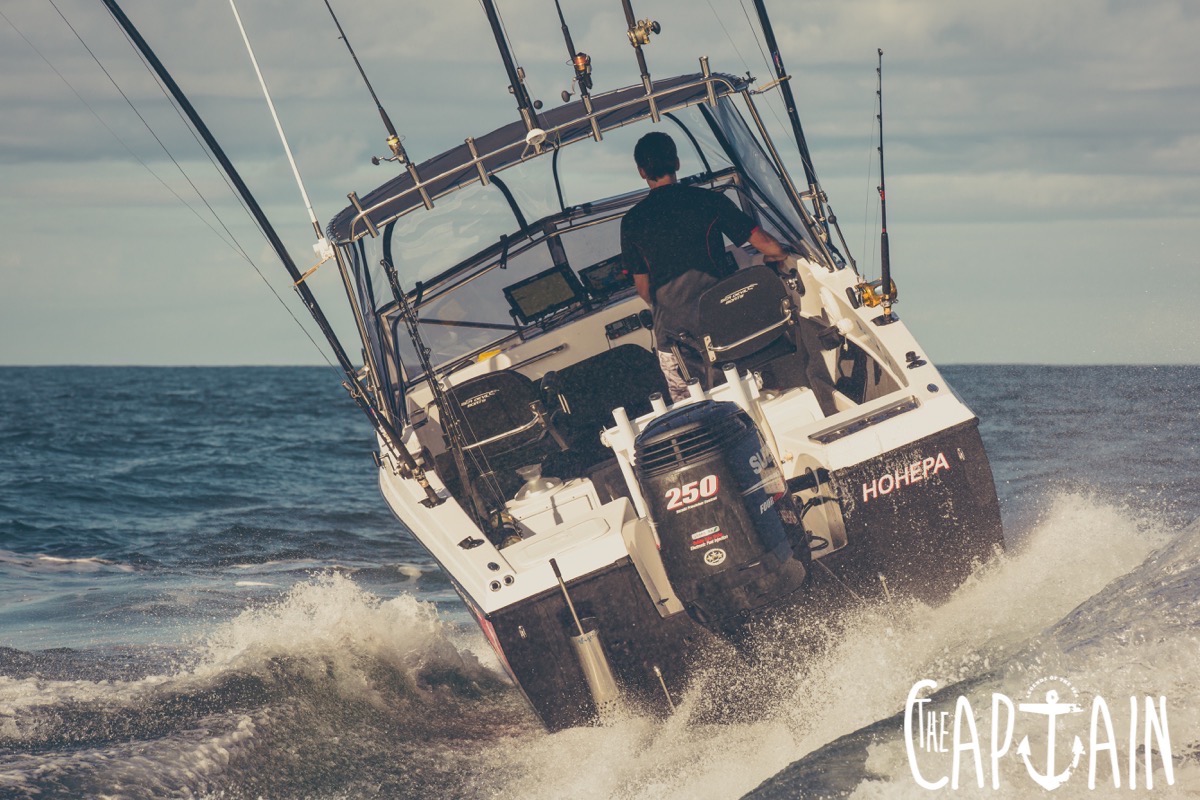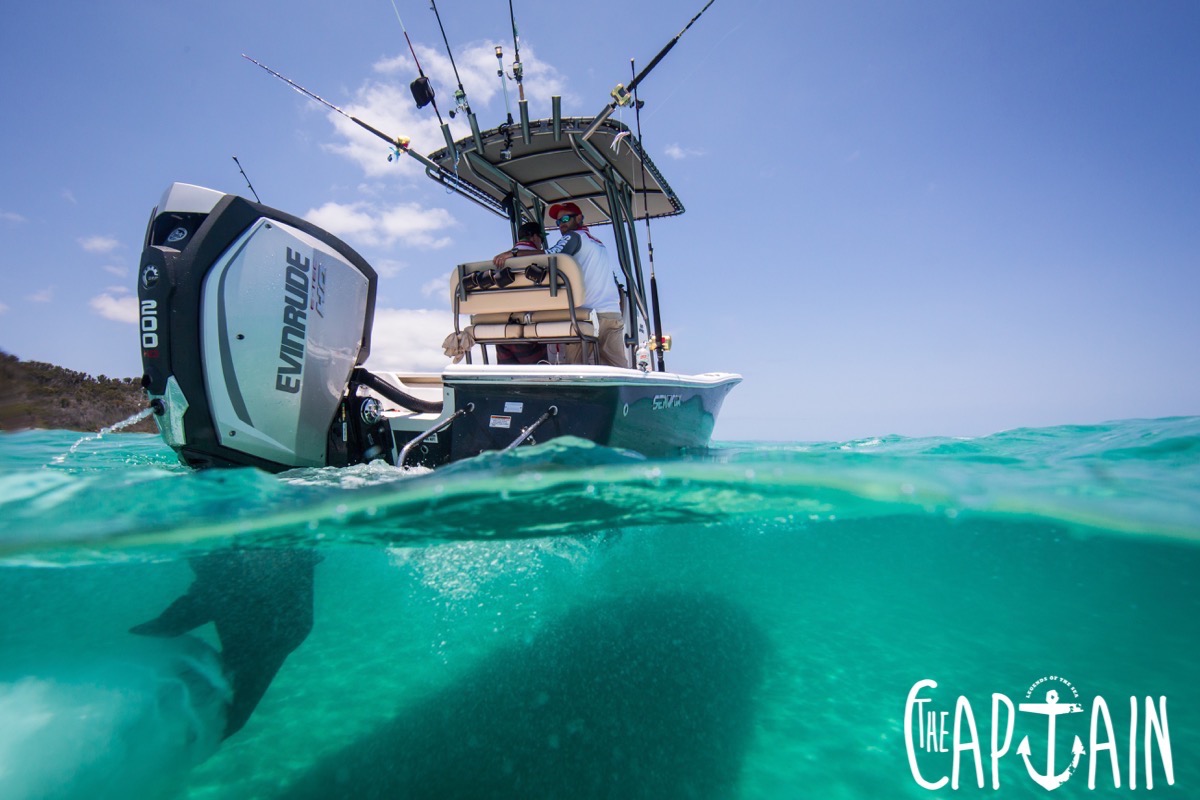Outboards. Some like them big and fast, others like ’em compact, efficient and quiet. The Captain spends more time driving them than he does his LandRover. So here are some of The Captain’s favourite outboard engines – all recently tested on tour.
ENGINE: Yamaha V6 4.2L big bore
“I wanted the lightest banger with the biggest capacity”
Model F300
Type Four-stroke V6
Displacement 4.2L
Weight 255kg on 25″ shaft
Manufacturer’s claim: “Leading edge of high-performance technology with class-leading displacement, significantly lighter than their predecessors, fuel-efficient and legendary Yamaha reliability.”
Owner’s view: Cootacraft Coldfront owner Wayne Bernhard says, “I wanted the lightest banger with the biggest capacity, so I got the 4.2-litre. The efficiency speaks for itself – coming back from a swordfishing session on Saturday, we were doing 30knots at 3300rpm, travelling at 1.5km per litre. I love the gauge kit – all the information I need sits in a nice little package. I pulled 58 knots with a Spinelli prop, but it cavitates a bit. The Yamaha Saltwater Series SDS prop is an awesome bit of kit with good hole-shot and economy. Top speed is 54 knots. Come to think of it, I might fit a supercharger one day.”
If it was a car engine: It’d be a turbo-diesel from a Toyota Land Cruiser – refined grunt complemented by great economy and reliability. Your Dad probably has one, too.
The Captain’s verdict: Yamaha four-strokes are well known for economy and reliability, but what about the hole-shot? Any doubts were blown away when we dropped the throttle on the Cootacraft Coldfront. It was highly responsive right through the rev range, with a V6 purr that grows to a familiar growl at high revs. The Yamaha big bore has higher displacement than its competitors (at 4.2 litres), but weighs a meagre 255kg, which is the same as a 300HP E-TEC G2. It also weighs 20kg less than a Suzuki DF300AP and 30kg less than a Honda BF250 or Mercury 300HP Verado. The only real drawback we can see is the price tag, but Yamaha owners never seem to complain. They just keep clocking up the hours.
Captain’s pot rating: 4.9 pistons out of 5
Tested on a Cootacraft Coldfront
ENGINE: Suzuki DF250AP
“Compact, understated and unexpectedly awesome”
Model DF250AP
Type Four-stroke V6
Displacement 4L
Weight 263kg on 25″ shaft
Manufacturer’s claim: “Lean burn, most compact in class, reduced drag from the previous model for faster acceleration and top-end speed.”
Owner’s view: Whittley Sea Legend 24 owner Andrew Westlake says, “I’m blown away by the advancement in four-stroke technology in the past few years. I’ve upgraded from a seven-year-old Yamaha 225 four-stroke to a V6 four-litre Suzuki, and fuel consumption has gone from an average of 0.9km per litre to 1.1km per litre. I have gained eight knots of top-end speed and a 20 per cent gain in fuel economy. This improved fuel efficiency has extended my cruising range by 50km in the open sea.”
If it was a car engine: It’d be an FPV Typhoon engine. Both four litres, they’re compact, understated and unexpectedly awesome.
The Captain’s verdict: The Suzuki big-bores have somehow crept up on the market, but we’re not complaining. They have a growing reputation among offshore fishermen; they’re predictable, easy to live with and deliver on their lean burn claims. An added bonus of the compact dimensions is a pair of big Suzukis can be mounted close together on twin-rig vessels. Manufacturers also claim their dimensions suit deep-vee boats. It’s no surprise many of the big twin-rig boats The Captain has tested are sporting a pair of Suzis.
Captain’s pot rating: 4.7 pistons out of 5
*Tested on a Whittley SL24 and Sea Devil 620
ENGINE:E-TEC G2 E200XH H.O
“If you like your wife to pole dance every night of the week, then get a G2”
Model G2 E200XH H.O
Type Two-stroke V6
Displacement 3.4L
Weight 253kg on 25″ shaft
Manufacturer’s claim: “The outboard of the future, now. Choose cutting-edge over commonplace. Choose more torque over more talk. Choose more time on the water over more time in the shop. Choose the outboard that performs and looks like no other outboard in the world. Enjoy your time on the water without worrying about oil levels. No dealer-scheduled maintenance is required for five years or 500 hours of operation.”
Owner’s view: Jason Hedges, Sea Fox test pilot says, “The G2 turns a placid Sea Fox into a wild animal. The hole-shot and acceleration of the E-TEC is incomparable to other engines. It’s efficient, as well. We ran around Fraser for four days straight – and used about 30 per cent less fuel than similar-sized four-strokes. Sure, you’ve gotta buy the oil, but there’s no-service fee for five years or 500 hours. The tech support is very cool, too. The bump support means you can adjust speed in small increments, perfect for trolling dead-baits or lures at the optimum speed. The steering system is effortless. They look cool – all square-edged and bung-eyed! Overall, the new E-TECs are closer to the limit than other engines, but if you like your wife to pole dance every night of the week, then get a G2.”
If it was a car engine: It would be a turbo-charged Subaru WRX engine. It’s lightweight, fast and furious – and you know when one is around the corner. Owners often found wearing caps facing backward.
Captain’s verdict: The Australian outboard market is dominated by brands that play a straight bat, promoting reliability and familiarity. E-TEC has gone the other way with a “choose your own look” concept and plenty of marketing trash talk. We tested the latest 200 H.O – and it fits the description of most other E-TECs we’ve tested. It’s lots of fun and especially receptive to the throttle. Handling characteristics have been improved with speed-sensitive steering fed through hydraulic actuators rather than rams. It’s a neater-looking system down back, too. One of the lightest big bangers going around, weighing less than any of these big hot-pots. On the downside, it vibrates more than other four-strokes at low revs and it’s noisier. Despite the manufacturer telling us not to worry about oil levels, we think you probably should. The fumy smell is not every ones cup of tea, but like Optimax owners, the vapours give their owners an adrenaline rush.
Captain’s pot rating: 4.2 pistons out of 5
Tested on a Sea Fox 220 Viper
ENGINE: Honda BF225
“Any doubts about the hole-shot performance are bullshit – it’s not 1988 anymore”
Model BF225
Type Four-stroke V6
Displacement 3.6L
Weight 288kg on 25″ shaft
Manufacturer’s claim: “A superior blend of power, torque and fuel efficiency. VTEC produces a longer, flatter torque curve for max power at every speed. Hole-shot is vastly improved as more horsepower gets the hull up on plane quicker. Twice as quiet as its conventional two-stroke counterpart. Vibration levels are extremely low.”
Owner’s view: Bass Strait Ocean Pro owner Michael Lowe says, “The first Honda I owned came on the back of a Caribbean. I nearly didn’t buy it because of the Honda – but that thing was phenomenal! I know why they say, ‘Once you buy a Honda you never look back’. My Bass Strait Ocean Pro was the first to be fitted with a Honda. It’s fair to say Ben (the builder) was a bit hesitant, given the other products on offer, but after testing with a four-blade prop he was bloody impressed. Any doubts about the hole-shot performance are bullshit – it’s not 1988 anymore, you give this thing a handful and she definitely goes. You can’t go past the seven-year, unlimited-hour warranty, either.”
If it was a car engine: It would be a Turbo Diesel F Truck. Big cubes, not working overtime, nice murmur and goes forever.
Captain’s verdict: Everyone remembers his or her first ride in a Honda four-stroke-powered boat. The serene feeling of bottom bashing and trolling with no engine noise and fumes. Since then, it seems the rest of the outboard world has caught up with Honda, but the BF225 delivers on the original Honda promise. It’s the well-behaved big-banger. We spent a day in a twin-rig Robalo 260 and barely noticed the engines all day. The low vibration and low noise levels are true to the manufacturer’s promise. Controlling the twin 225s from the twin binnacles is the closest The Captain will get to piloting a jet engine – super-smooth power delivery mixed with a familiar Honda whirring sound at speed. It’s probably not the hole-shot hero among some of these racehorses, but if proven technology, refinement and efficiency are your thing, then the BF225 might be your big-banger.
Captain’s pot rating: 4.5 pistons out of 5
Tested on a Robalo 260R






Recent Comments